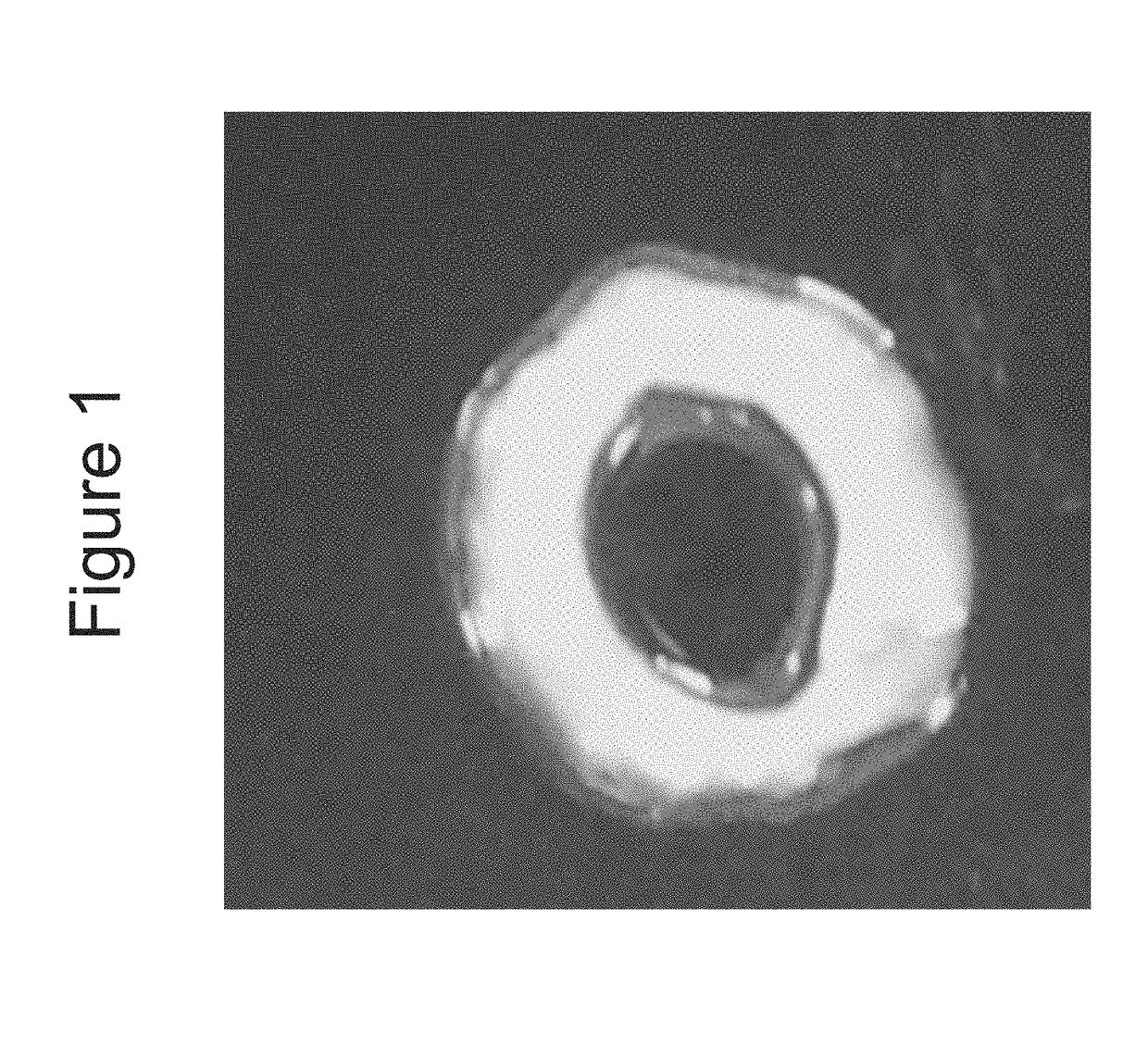Innervation Of Engineered Structures
- Summary
- Abstract
- Description
- Claims
- Application Information
AI Technical Summary
Benefits of technology
Problems solved by technology
Method used
Image
Examples
example 1
[0104]Bioengineered innervated and non-innervated internal anal sphincter (IAS) constructs were made using autologous rabbit IAS smooth muscle and enteric neuronal progenitor cells. After 4 days in culture, the constructs were placed around a biodegradable composite chitosan tubular scaffold. A non-innervated muscle construct (lacking neuronal cells) was placed abutting an innervated construct (smooth muscle cells with neuronal cells) on one side. Another non-innervated muscle construct was placed 1 mm away from the innervated construct on the other side. Physiological functionality of the constructs was assessed in vitro.
[0105]Positive NADPH Diaphorase staining of the bioengineered innervated construct demonstrated the presence of nitrergic neurons.
[0106]Microscopic images showed cellular processes bridging the gap between the innervated and the non-innervated construct as early as day 4 after placing the constructs on the scaffold. At day 10, a network of differentiated neurons wa...
example 2
[0109]In this example, intrinsically innervated three-dimensional rabbit colon constructs were bioengineered and characterized.
[0110]Smooth muscle cells were trypsinized and neurospheres were accutased. 500 k smooth muscle cells and 200 k enteric neuronal progenitor cells were centrifuged to form a cell pellet.
[0111]The enteric neuronal progenitor cells were resuspended in a 0.4 mg / ml collagen (type I rat tail) and laminin (5 ug / ml) solution. The solution was pipetted onto Sylgard coated 35 mm dishes around a central post. When placed in the 37 C incubator, solution gelled in 15-30 minutes.
[0112]Smooth muscle cell pellet was resuspended in a 0.4 mg / ml collagen solution and pipetted over the first gel layer and returned to the incubator.
[0113]After 2-4 hours, gels were released from the edge of the plate using a sterile 22 g needle.
[0114]1 ml of Neuronal Differentiation Medium (Neurobasal A+B27) was added and the plates were returned to the 37 C / 7% CO2 incubator for differentiation.
[...
PUM
| Property | Measurement | Unit |
|---|---|---|
| Structure | aaaaa | aaaaa |
Abstract
Description
Claims
Application Information
 Login to View More
Login to View More - R&D
- Intellectual Property
- Life Sciences
- Materials
- Tech Scout
- Unparalleled Data Quality
- Higher Quality Content
- 60% Fewer Hallucinations
Browse by: Latest US Patents, China's latest patents, Technical Efficacy Thesaurus, Application Domain, Technology Topic, Popular Technical Reports.
© 2025 PatSnap. All rights reserved.Legal|Privacy policy|Modern Slavery Act Transparency Statement|Sitemap|About US| Contact US: help@patsnap.com



